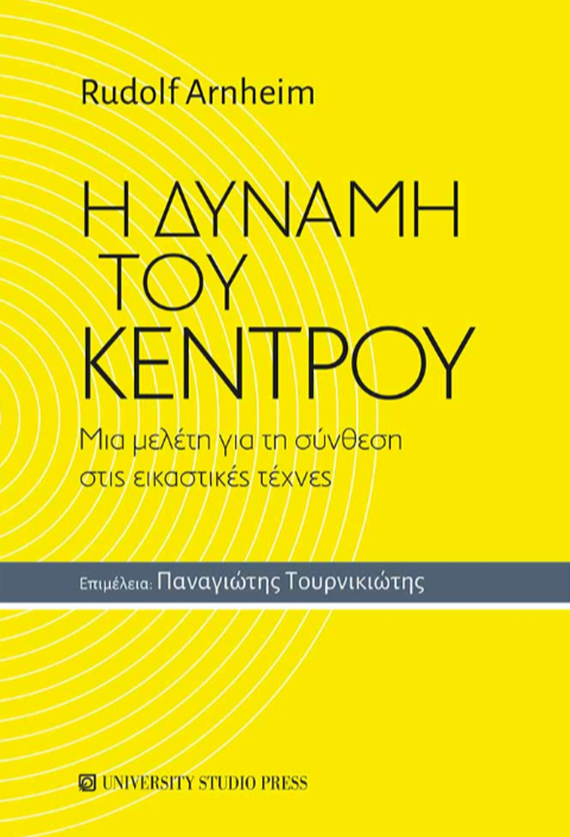
Title: The Power of the Center
Author: Rudolf Arnheim
Editor: Panagiotis Tournikiotis
Publisher: University Studio Press
Subject: Art History
Year: 2022
Pages: 308
Technical Features: 14Χ21
Rudolf Arnheim investigates the overall organization of visual form in works of painting, sculpture, and architecture, starting from the synthetic power of the center. Composition, as an important prerequisite for every organized visual expression, has been studied for centuries by artists, theorists, and art critics. This book formulates principles of composition that generally apply to architecture, sculpture, painting, applied arts, and fine arts, regardless of the place and time of their creation. Arnheim is convinced that composition, in any medium or style, arises from the interaction of two visual principles: the central and the eccentric system. The book begins with a thorough analysis of composition, seen as a dynamic interaction of visual tendencies. Vectors and their basic grouping as centers of energy are described. After the role of the primary center—the force of gravity and the influence of the viewer—follows the broader interaction of the composition’s focal point. Observations related to design are integrated with those concerning the circle and the square. The center of balance, as the core of the composition, is clearly distinguished from its function as a separator in the two-dimensional grouping, while extensions in time and other theoretical foundations of the author’s basic approach are gathered in the final chapter. Additionally, Arnheim has been concerned with the search for the most appropriate terminology. Rudolf Arnheim (1904–2007) taught psychology of art at Harvard University and psychology at Sarah Lawrence College in New York.







Leave A Comment